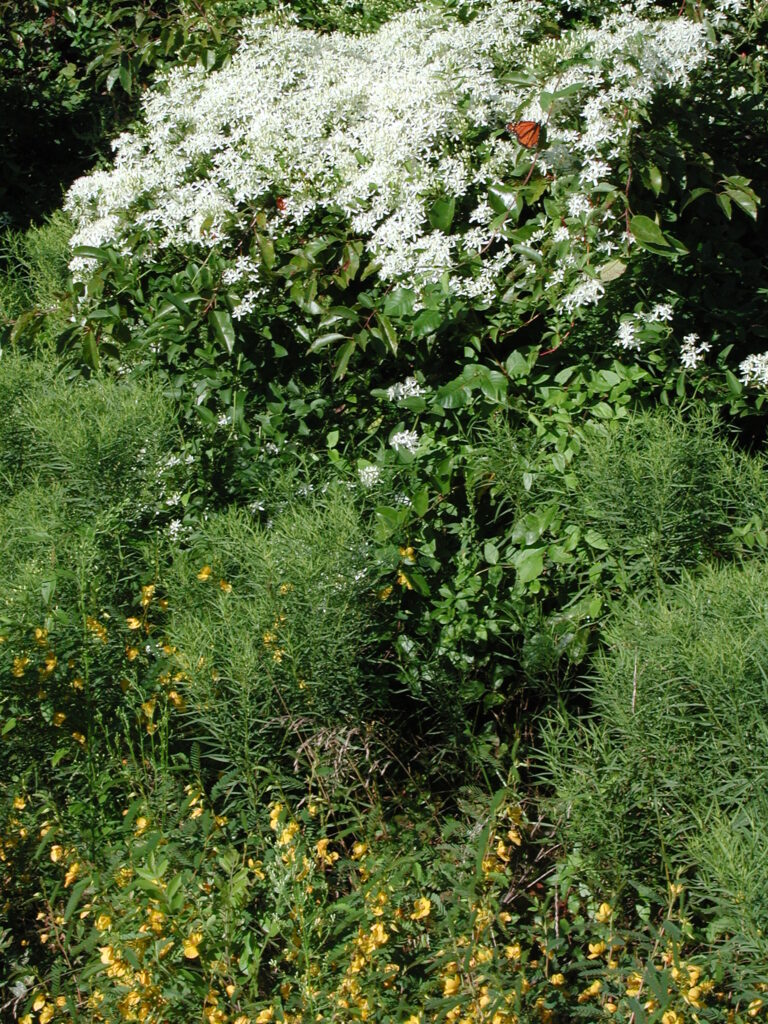Autumn Glorybower Not So Glorious
go.ncsu.edu/readext?958101
en Español / em Português
El inglés es el idioma de control de esta página. En la medida en que haya algún conflicto entre la traducción al inglés y la traducción, el inglés prevalece.
Al hacer clic en el enlace de traducción se activa un servicio de traducción gratuito para convertir la página al español. Al igual que con cualquier traducción por Internet, la conversión no es sensible al contexto y puede que no traduzca el texto en su significado original. NC State Extension no garantiza la exactitud del texto traducido. Por favor, tenga en cuenta que algunas aplicaciones y/o servicios pueden no funcionar como se espera cuando se traducen.
Português
Inglês é o idioma de controle desta página. Na medida que haja algum conflito entre o texto original em Inglês e a tradução, o Inglês prevalece.
Ao clicar no link de tradução, um serviço gratuito de tradução será ativado para converter a página para o Português. Como em qualquer tradução pela internet, a conversão não é sensivel ao contexto e pode não ocorrer a tradução para o significado orginal. O serviço de Extensão da Carolina do Norte (NC State Extension) não garante a exatidão do texto traduzido. Por favor, observe que algumas funções ou serviços podem não funcionar como esperado após a tradução.
English
English is the controlling language of this page. To the extent there is any conflict between the English text and the translation, English controls.
Clicking on the translation link activates a free translation service to convert the page to Spanish. As with any Internet translation, the conversion is not context-sensitive and may not translate the text to its original meaning. NC State Extension does not guarantee the accuracy of the translated text. Please note that some applications and/or services may not function as expected when translated.
Collapse ▲It may not be the next kudzu, but it is well on its way. You’ve probably noticed the waterfalls of white blossoms hanging from the trees and draped over shrubs and brush on the sides of the road. The pure white blossoms glow against the faded, tired foliage of summer. Unfortunately, this is the most likely invasive Sweet Autumn Virgin’s Bower, scientifically, Clematis terniflora. It is in full bloom right now in Lee County, and now is the time to act to remove the vine! The flowers can guide you to where the vine comes out of the ground.
But it is so pretty!
The Sweet Autumn Virgin’s Bower was brought into North America from Asia because of its dense flowering habit and vigorous growth rate. It grows quickly even in challenging soil conditions, and tolerates a wide range of light conditions. The vine flowers at a time when summer is fading and fall is coming into focus. Garden-wise, there usually aren’t many things flowering when the Sweet Autumn Virgin’s Bower is, making it great for providing garden interest during a flower lull. Many native pollinators and honey bees will visit the flowers for pollen and nectar, too.
Even still, it is important to not get hung up on its beauty. Invasive species, no matter how beautiful, cause real ecological and economic damage.
Not to be confused with…
Horticulturists at the time didn’t realize there was a comparable native species, Clematis virginiana, the Virgin’s Bower, already here. While its flowering isn’t as dense as the invasive species, it is still very tolerant of a wide variety of growing conditions. It is now hard to find because of our diligent mowing habits on the sides of roads and on cleared land.
There is a major difference between the invasive and native species, though! Makesure to check the leaves before you start removing the vines so you don’t accidentally pull up or treat the wrong species with herbicide. The leaf margins, or edges of the leaves, of the invasive species are smooth and round, while the native species’s leaves have teeth or zig-zag-like edges. The leaves of Clematis terniflora, the invasive species, are also more glossy and shiny, while our native Clematis virginiana has a more matte, dull green color.

What Should You Care?
Invasive species have been on our mind here in Lee County because of the upcoming Bradford Pear Bounty. Invasive species degrade our local ecosystems and cause property damage. They add to the already heavy workload of farmers and landowners who have to deal with the aggressive growth habits and dense stands of non-native species when they otherwise wouldn’t have to. It makes hunters’ jobs harder, as non-native species are not as effective at supporting game species, and food plots have to be managed for them, on top of standard maintenance.
Invasive species do not recognize property lines. Animals eat the fruits and wind carries the seeds wherever they want to. This makes invasive species awareness and control a community issue. It will take everyone working together to remove invasive species when they see them so the seeds do not continue to spread to other community members’ properties. It can be done, one plant at a time.
Consider enjoying your Sweet Autumn Virgin’s Bower one more time this year, and then work on removing the vines by hand-pulling or using herbicide on the vines where they come out of the ground. It is critical to do this before the seeds develop and fly away on the wind to someone else’s property!
Amanda Wilkins is the Horticulture Agent for North Carolina Cooperative Extension in Lee County.




